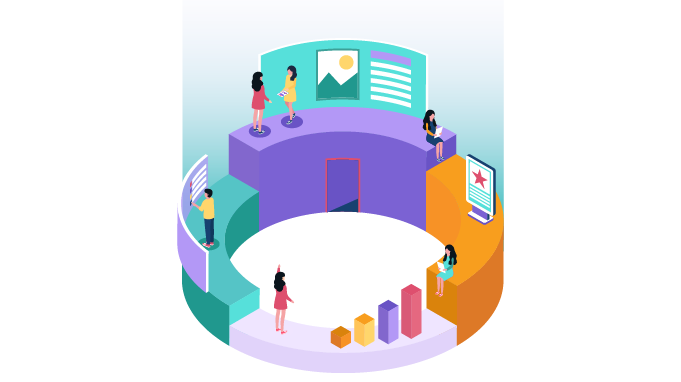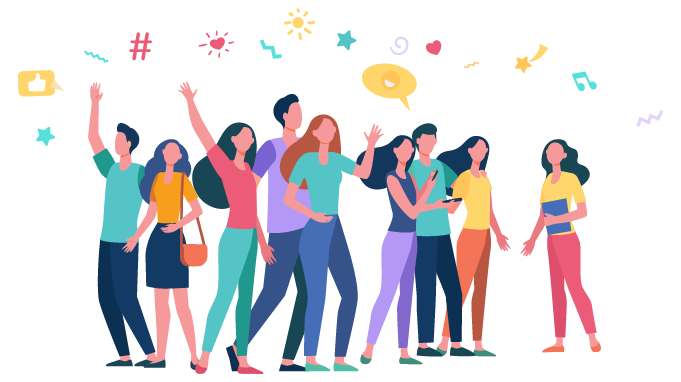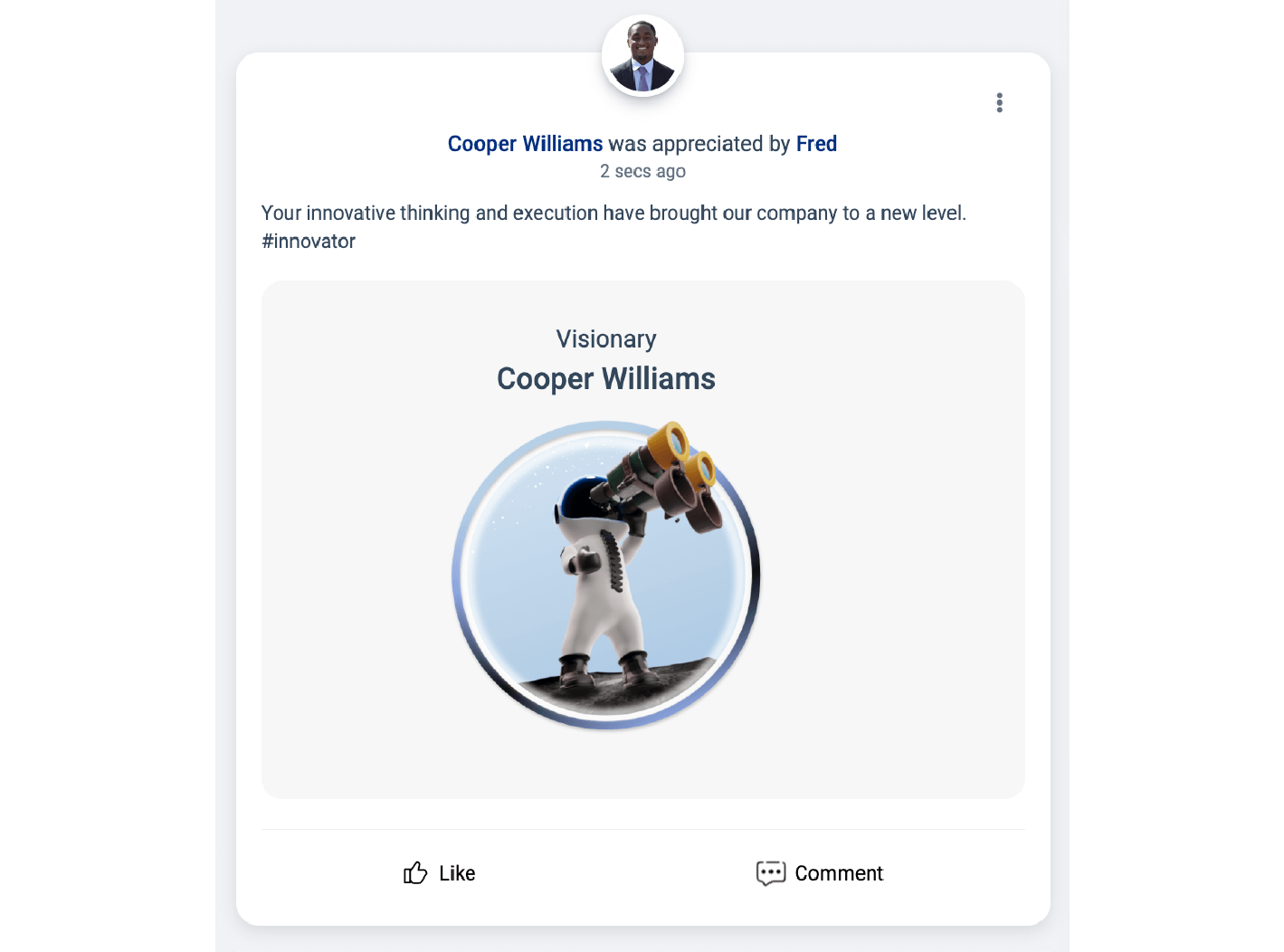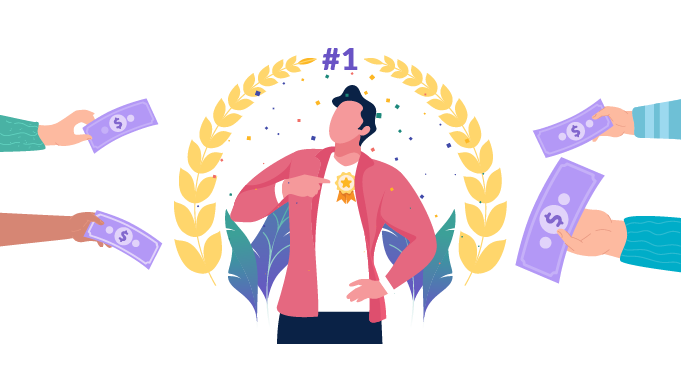From One Size Fits All to Tailored Recognition: Why Personalization Matters More Than Ever in 2025

A Global Employee Recognition and Wellness Platform
Humans have an innate nature of craving for recognition. Be it in the workplace or within the family. We thrive on recognition. No company will ever say they don't want recognition, and no employee will tell you they don't need appreciation.
The problem isn't that we don't understand recognition, it is that we're doing it completely wrong. I've been in this space for over two decades, and I see the same pattern everywhere.
Companies launch annual award ceremonies, distribute some gift cards, maybe throw in branded merchandise, and think they've solved employee engagement. But gestures like these rarely move the needle. It's like trying to run a 2025 business with a 1997 playbook.
The employee recognition landscape today stands at an inflection point. Report from GPTW in collaboration with Vantage Circle reveals that in high-recognition cultures, 92% of employees express intent to stay, yet most companies remain trapped in outdated appreciation models.
Recognition programs cannot be "set it and forget it" initiatives anymore. They require continuous evaluation, measurement, and tweaking. No one's going to get the perfect recognition system, since it's a journey. But you have to start somewhere and continuously improve.
The Evolution of Recognition from Generic to Genuine

Lessons from the Old Playbook: Why One-Size-Fits-All Recognition Falls Short
When I first stepped into the recognition and rewards space more than two decades ago, the playbook was fairly standard. The legacy recognition model we inherited was built for a different workforce and a different era.
Annual ceremonies, standardized awards, and manager-controlled recognition programs served their purpose in the past. Back then, organizational hierarchies were rigid and employee expectations were largely uniform because the system was designed for operational efficiency, not human connection.
The wake-up call came when we started connecting recognition data to business outcomes. Organizations clinging to generic approaches consistently underperformed. Their low-engagement teams see turnover that’s 18–43% higher than their engaged peers.
From a capital allocation perspective, generic recognition represents one of the worst investment decisions leadership teams make. You're deploying resources into a system engineered to produce mediocre results while creating retention risk among your highest-performing assets.
The 2025 Reality Check: What Today's Workforce Actually Values
The recognition game has fundamentally changed. Today's employees don't just want appreciation, they demand it be meaningful, timely, and reflective of who they are as individuals. Miss this mark, and you're contributing to the $8.8 trillion in lost productivity that disengaged employees cost the global economy annually.
The challenge lies in our unprecedented workplace diversity. What energizes a Gen Z employee might be radically different from what motivates a veteran professional nearing retirement.
For instance, your 24-year-old data analyst might crave instant feedback and social recognition through digital platforms, while your 58-year-old operations director might value thoughtful, private acknowledgment and tangible career advancement.
Leading companies are already capitalizing on this understanding. And they are winning the game because they have stopped treating recognition as one-size-fits-all and started treating it as mass customization.
Organizations that embed a culture of recognition outperform peers with 94% reporting excellent customer service, 93% demonstrating organizational agility, and 91% showing higher employee motivation.
Five Critical Trends Every Leader Must Address in Their Recognition Strategy
1. Leading a Multi-Generational Team: The Recognition Preferences That Matter

The modern workplace spans four generations, each carrying distinct recognition expectations shaped by their formative experiences. You have to factor in their differences to avoid age discrimination and build communication fluency.
How to Engage Digital-Native Workforce (Gen Z & Millennials)
Millennials and Gen Z now represent 65% of the global workforce, according to Deloitte Survey. These generations entered the workforce during the social media explosion and smartphone revolution.
Their recognition expectations mirror their digital-first lifestyle:
-
Immediacy is Everything: These employees operate in real-time feedback loops where instant acknowledgment validates effort and maintains momentum. Recognition delivered weeks after an achievement feels disconnected to them.
-
Social Amplification Effect: The ability to share achievements across professional network is a huge motivator for them. When an achievement can be celebrated beyond the immediate team, it transforms personal recognition into social validation.
-
Peer-Driven Validation: Recognition from colleagues often carries more weight than top-down acknowledgment.
How to Engage the Experience Rich Workforce (Gen X & Boomers)
Generation X and Baby Boomers still comprise 20-35% of the workforce. Their recognition preferences are rooted in traditional career progression models and formal organizational structures. It includes:
-
Ceremonial Significance: Public presentations that honor career milestones and institutional knowledge give them a sense of professional pride. These formal moments create lasting memories and reinforce their value to the organization's history and future.
-
Leadership Proximity: One-on-one appreciation from senior leaders carries exponential weight because it represents respect from those they view as institutional authorities.
-
Tangible Recognition Artifacts: They prefer physical awards, written notes, and displayable tokens of recognition. These keepsakes can be shared with family and preserved as meaningful milestones in their career journey.
2. The Hybrid Leadership Challenge: Building Connection Across Physical and Digital Spaces

The hybrid workplace has fundamentally reshaped how recognition moves through an organization. Today, recognition flows across video calls, collaboration platforms, dedicated recognition software, and of course, traditional in-person gatherings.
The real challenge isn’t just delivering recognition, but ensuring that every employee regardless of location, feels the same authenticity in their acknowledgment.
That’s where the Four Pillars of Hybrid Recognition come in. It includes:
-
Multiple Touchpoints Strategy: Recognition should flow across video calls, collaboration platforms, digital tools, and in-person gatherings. The goal is to reach every employee in their preferred work environment with equal impact and authenticity.
-
Geographic Inclusivity: Replace location-specific celebrations with universal experiences. Organize virtual milestone events where all team members participate, combined with localized cultural celebrations.
-
Technology Integration: Recognition platforms make it possible to deliver real-time, borderless acknowledgment that’s personal and culturally sensitive. Features like instant peer shout-outs or automated milestone reminders ensure no contribution goes unnoticed.
-
Workflow Embedding: Recognition is most effective when it’s part of the flow of work. By embedding recognition directly into everyday tools like Microsoft Teams or Slack, employees can give and receive appreciation in real time.
3. Harnessing AI and Data: The Intelligence Behind Intelligent Recognition

What began as an experimental tool has now evolved into an infrastructure that can enable us to approach recognition at a larger scale. The question is no longer whether to adopt these technologies, but how strategically we implement them.
Think of it this way. In a large organization with thousands of employees, no single leader can possibly keep track of every milestone, contribution, or effort that deserves acknowledgment. But with the help of AI modern platforms can analyze behavior and preferences to highlight achievements that might otherwise go unnoticed.
But here’s the caution, recognition is not just about data points. It’s about people. Automation can tell you who to recognize and when, but it cannot replace the authenticity of a heartfelt message.
4. Recognition as a Diversity, Equity & Inclusion Strategy

Recognition, when designed with intention, can be one of the most impactful strategies to advance Diversity, Equity, and Inclusion (DEI) in the workplace. Beyond celebrating achievements, it creates a culture where every individual, regardless of background, identity, or role, feels seen and valued.
Consider the impact of celebrating a team member’s cultural festival, acknowledging a colleague’s parental leave journey, or recognizing an employee’s commitment to community service. These moments may seem small, but they carry tremendous emotional weight. It encourages employees to bring their full selves into the workplace, knowing their identities will be seen, respected, and valued.
5. Economic Realities: Maximizing Recognition Impact During Uncertain Times

During economic uncertainty, recognition often comes under scrutiny. But the truth is, recognition doesn’t require deep pockets, it needs intentionality. Simple gestures of acknowledgment, public appreciation, and peer-to-peer recognition can carry as much weight as monetary rewards.
Here are some of the ways you can maximize recognition impact:
Think Beyond Budgets: Cost-effective recognition doesn’t mean doing less, it means doing it with greater thoughtfulness. A sincere “thank you” or recognition tailored to individual contributions can often have a more lasting impact than a bonus check.
Prioritize Non-Monetary Recognition: Cash rewards may provide a short-term boost, but personal gestures, like a handwritten note, public praise, or paid time off can create a deeper and lasting impact.

Source: Vantage Recognition
Leverage Growth Opportunities as Recognition: Offering learning programs, mentorship, or stretch assignments recognizes employees’ potential and builds loyalty. It shows trust in their abilities while strengthening engagement.
The Business Case: Why Personalized Recognition Drives Bottom-Line Results

Engagement and Retention: The Numbers That Matter to Leaders
Personalized recognition works because it’s grounded in neuroscience. Tailored acknowledgment activates the brain’s reward pathways and releases oxytocin, creating strong emotional bonds between employees and their organizations.
Unlike generic praise, personalized recognition drives loyalty that sticks. In this day and age, replacing an employee can cost between 50-200% of their annual salary, meaning a $75,000 role replacement can cost $37,500-$150,000 in recruitment, onboarding, and productivity losses. Moreover, retained employees carry institutional knowledge and trust that compound in value over time.
Culture Amplification: Recognition as Your Values in Action
Culture is not defined by posters on a wall or statements on a website, it is reinforced daily through actions and behaviors. When you strategically recognize collaborative problem-solving, or innovative risk-taking, you're programming organizational behavior at scale. This creates a self-reinforcing culture where desired behaviors multiply organically.
Moreover, the market positioning advantages extend beyond internal culture. Top-tier talent increasingly evaluates potential employers based on recognition culture during recruitment processes. Organizations that are known for meaningful appreciation attract higher-caliber candidates, which shapes organizational DNA.
Budget Optimization: Getting More Impact from Your Recognition Investment
In an era where every dollar is scrutinized, recognition stands out as a high-impact investment that delivers measurable returns across engagement, retention, and performance. Yet, the true differentiator lies not in the size of the budget, but in the way recognition is structured.
Personalized recognition consistently delivers greater cost-per-impact than generic programs because it speaks directly to individual contributions. Not only that, it also creates deeper emotional resonance and stronger behavioral reinforcement.
The Path Forward
Twenty years from now, your organization will be defined by the culture you choose to build today. The question isn't whether personalized recognition will become the standard, it's whether your organization will lead this transformation or follow it. The choice, and the competitive advantage that comes with it, is entirely yours.


















